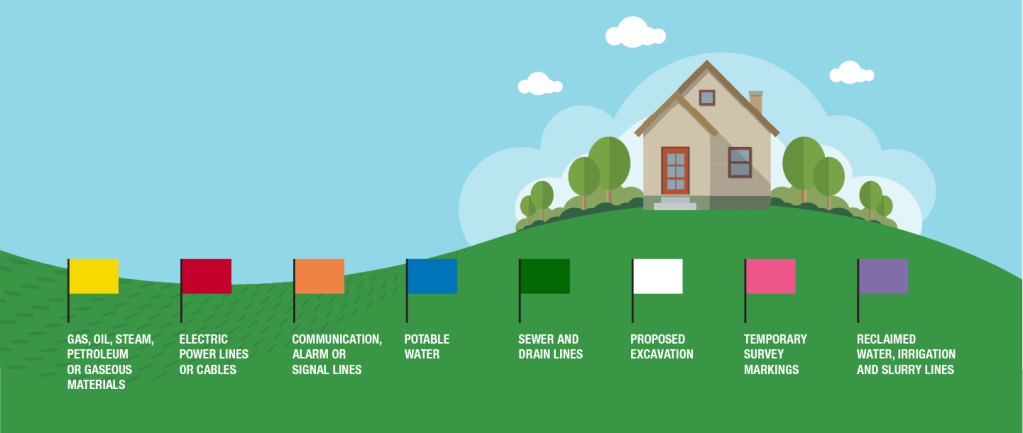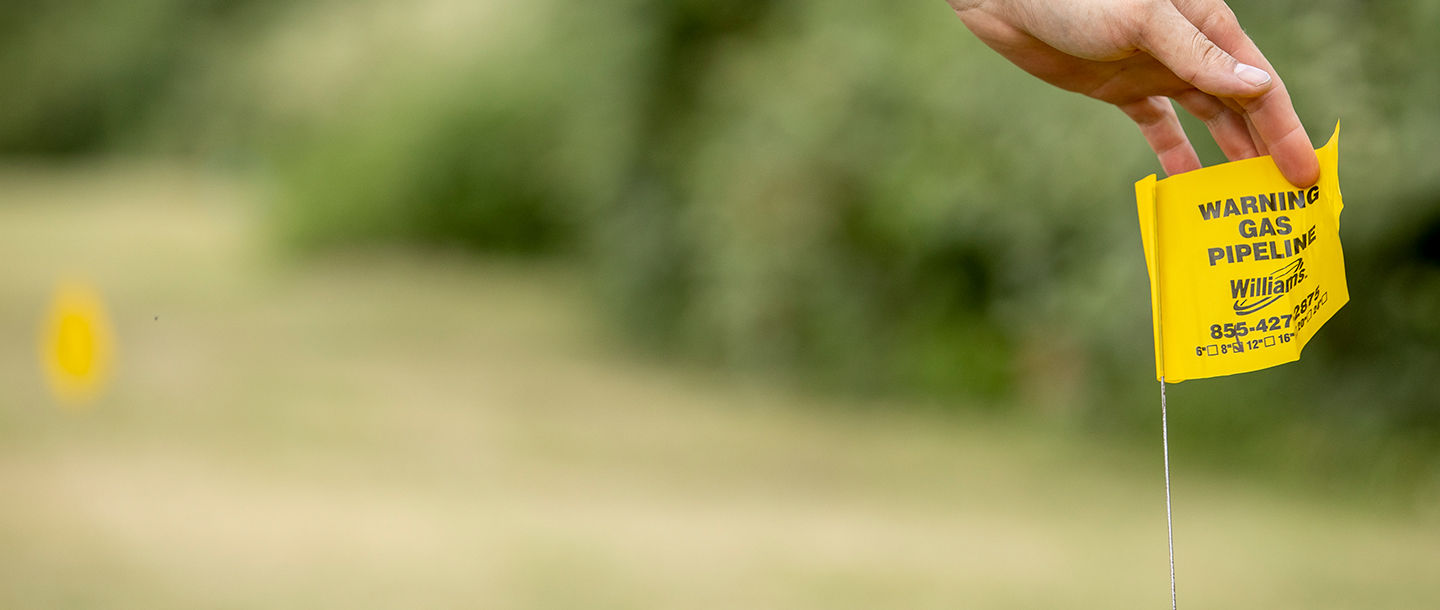April is National Safe Digging Month and a reminder to always call 811 before starting any digging project large or small. But do you know what happens after you make the call to your state’s One-Call Center? Williams employees are key to making sure you stay safe.
When you contact 811 before your digging project, a One-Call ticket is created and routed to nearby utility and pipeline companies.
If Williams has a pipeline near your project, Operations will receive an electronic copy of the One-Call ticket through the company’s electronic ticket management program, KorWeb. Operations personnel will review the One-Call ticket and determine whether the scope of work is clear of any Williams’ assets. If the scope of work is not clear, Operations will send an employee to mark any Williams’ pipelines with yellow paint and/or flags, so you know their approximate location.
But, our work started way before your call. Our GIS team uses sophisticated technology to map buffers around all 30,000 miles of pipeline that Williams operates, while coordinating with Operations. That information is updated often and sent to the state One-Call Centers, ensuring a high degree of accuracy.
Dynamic GIS mapping also allows our line locators to view locations of One-Call tickets overlaid with our assets, so they can be aware of clusters of excavation activities and resolve tickets quickly.
“GIS is a massive tool in being able to process requests quickly and efficiently,” said GIS Analyst Jason Fuller. “We work in partnership with Public Safety and Operations employees to follow strict protocols, so that every ticket is cleared properly for the safety of our workers, the public, our assets and the environment.”
In fact, last year Williams responded to 240,000 One-Call requests across our footprint. Only about 25,000 required line locators to mark our utilities, thanks to the accuracy of GIS mapping.
Damage Prevention Specialist Tyson Hacking located underground lines when he worked as an operations technician in rural Colorado. Although that sometimes required traversing difficult terrain in inclement weather, he said it was satisfying to know that his work kept others safe.
“It’s critical that anyone, whether a homeowner planting a tree or a professional excavator, always calls 811 before digging,” he said. “Not only is it the law, it’s easy and could save your life.”
Utility location crews use specific colors to indicate the location of lines underground.

- Yellow: natural gas
- Red: electric power lines or cables
- Orange: communication, alarm or signal lines
- Blue: potable water
- Green: sewers and drain lines
- White: proposed excavation limits or route
- Pink: temporary survey markings
- Purple: reclaimed water, irrigation and slurry lines
